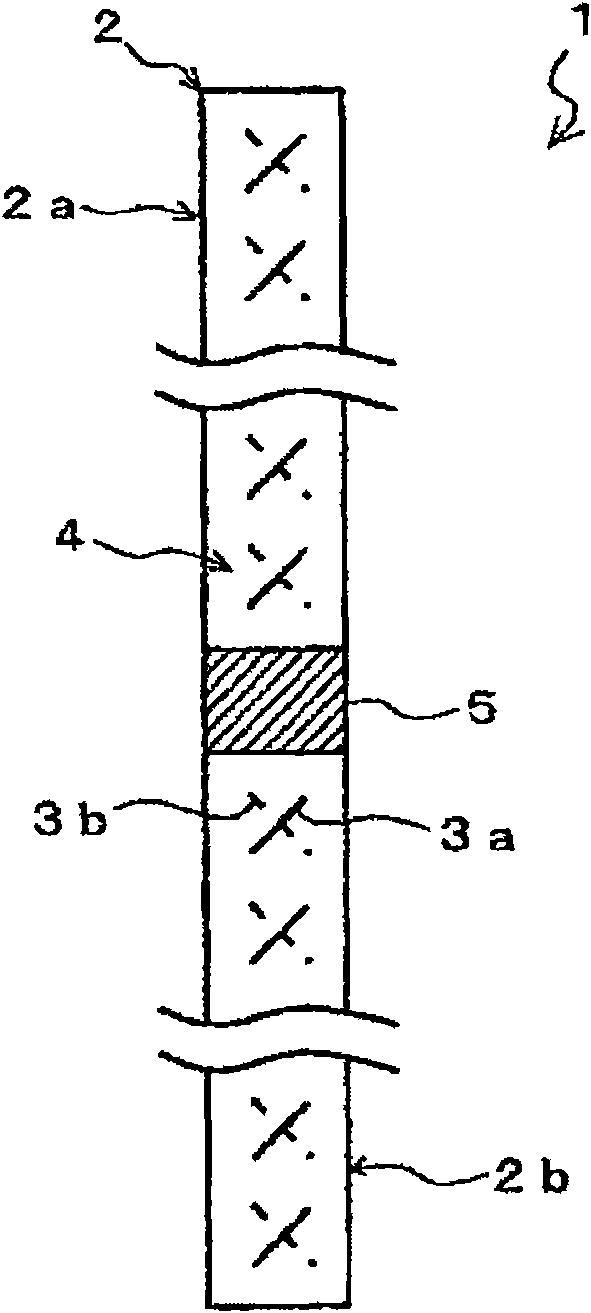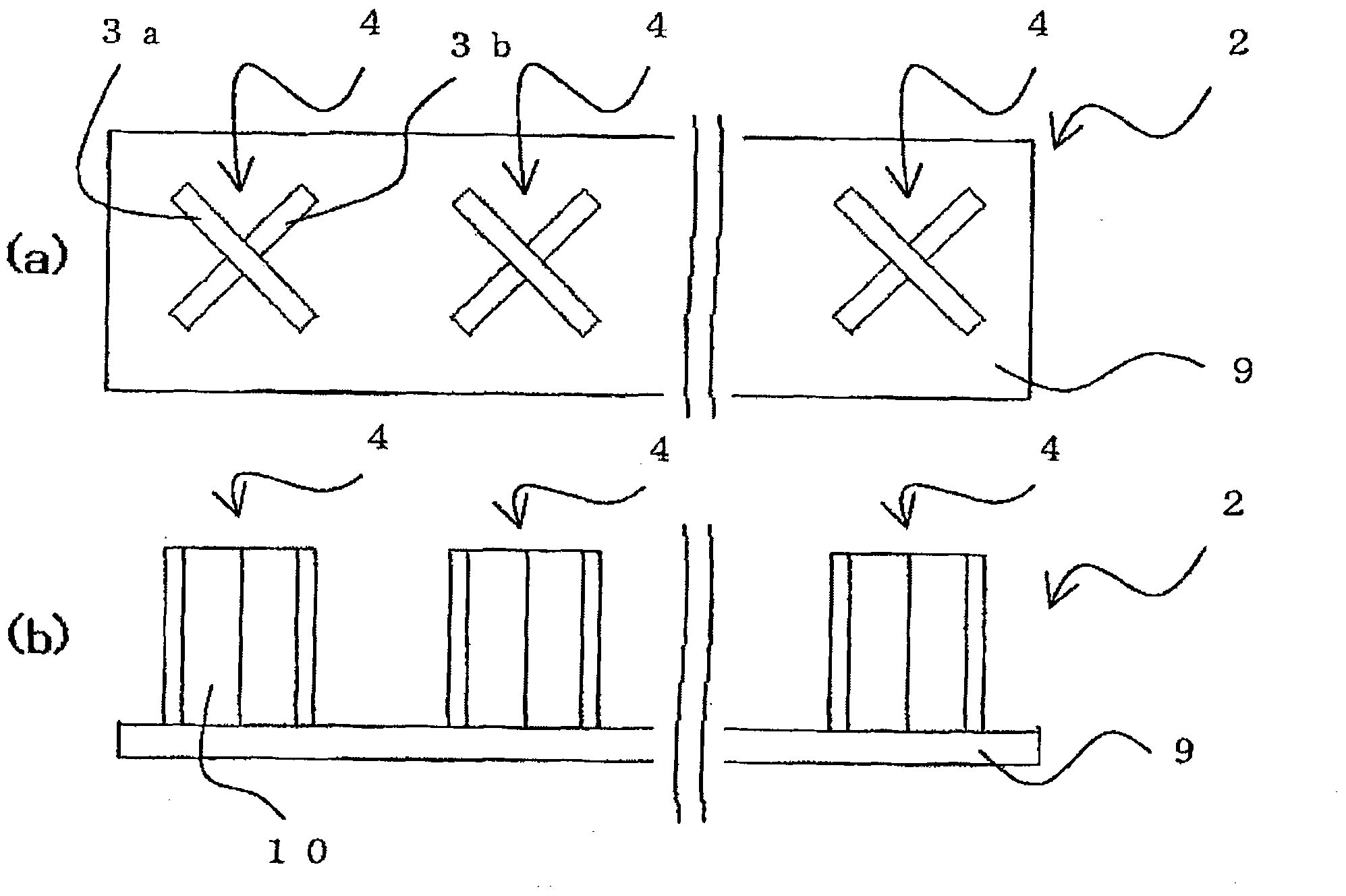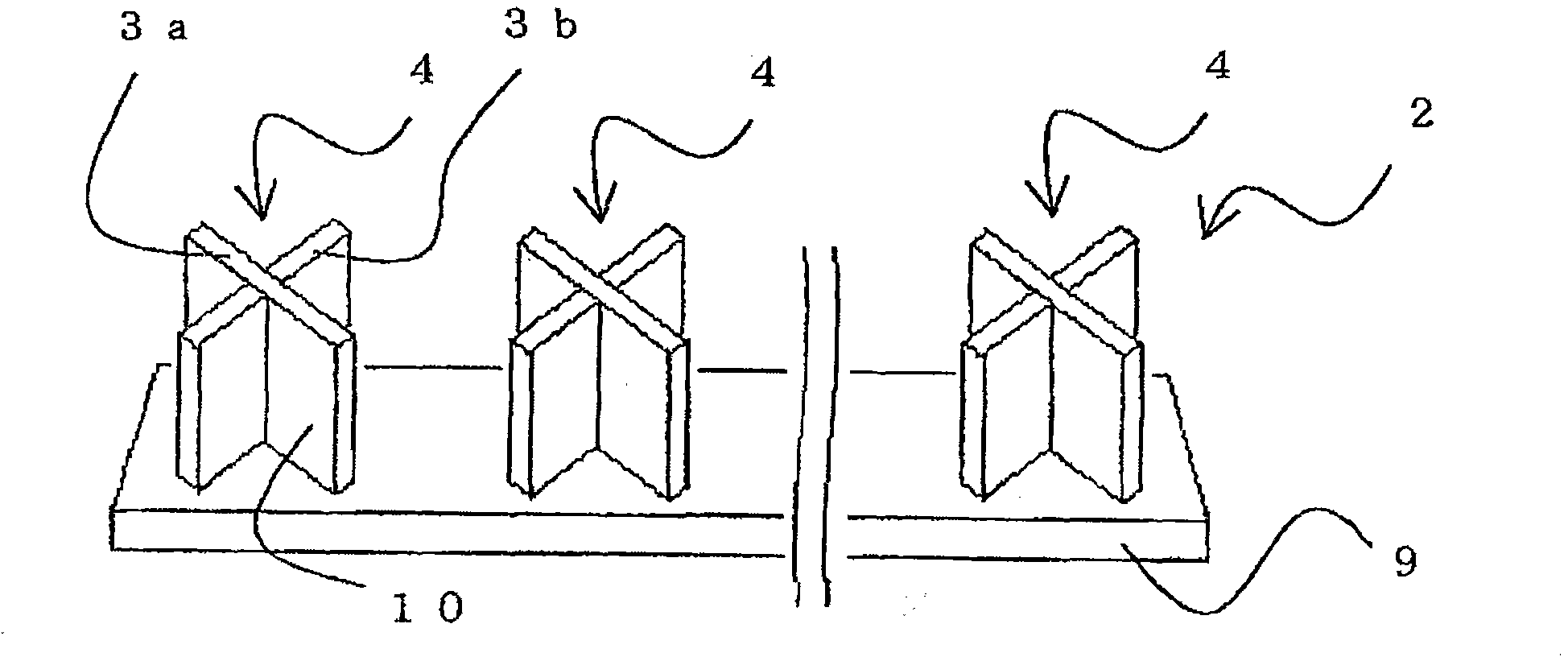Mobile communication base station antenna
A technology for mobile communication and base station antennas, which is applied to antennas, antenna arrays that are energized separately, and antenna components, etc. It can solve problems such as the verification of space diversity effects, achieve high speed, and increase data communication capacity.
- Summary
- Abstract
- Description
- Claims
- Application Information
AI Technical Summary
Problems solved by technology
Method used
Image
Examples
Embodiment 1
[0046] figure 1 It is a schematic diagram showing the base station antenna for mobile communication according to this embodiment.
[0047] Such as figure 1As shown, the base station antenna 1 for mobile communication has more than two array antennas ( figure 1 There are two in the middle), and each array antenna 2 is arranged at a predetermined interval in the vertical direction. In this embodiment, a case where two array antennas 2a, 2b are arranged in the vertical direction will be described.
[0048] The array antennas 2 a and 2 b are connected by a conductive plate 5 . The conductive plate 5 provides a common ground potential (GND potential) to the two array antennas 2a, 2b.
[0049] The array antennas 2a and 2b are arranged at a predetermined distance apart in the vertical direction.
[0050] The array antennas 2a and 2b are antennas in which a plurality of antenna element pairs 4 are arranged in an array. The antenna element pair 4 is composed of two antenna elemen...
Embodiment 2
[0080] Next, other embodiments of the present invention will be described.
[0081] Figure 8The base station antenna 61 shown for mobile communication is instead of the figure 1 In the base station antenna 1 for mobile communication, the array antenna 2 in which the pairs of ±45-degree antenna elements 4 are arranged in an array is used, and the array antenna 63 in which the horizontal and vertical antenna elements 62 are arranged in an array is used. The horizontal-vertical antenna element pair 62 is an antenna element pair in which one antenna element 64 a is arranged vertically and the other antenna element 64 b is arranged horizontally.
[0082] The base station antenna 61 for mobile communication is due to the figure 1 In the mobile communication base station antenna 1, the ±45-degree antenna element pair 4 is changed to a horizontal and vertical antenna element pair 62, so it can be obtained with figure 1 The base station antenna 1 for mobile communication has the sa...
Embodiment 3
[0084] Next, the base station antenna 71 for mobile communication of the third embodiment will be described below.
[0085] Figure 9 It is a schematic diagram showing the mobile communication base station antenna 71 according to the third embodiment of the present invention.
[0086] Figure 9 The illustrated base station antenna 71 for mobile communication is an antenna in which an array antenna 2 in which pairs of ±45-degree antenna elements 4 are arranged in an array and an array antenna 63 in which pairs of horizontal and vertical antenna elements 62 are arranged in an array are arranged in the vertical direction. .
[0087] The polarization directions of the array antenna 2 and the array antenna 63 are different, so when the array antenna 2 and the array antenna 63 are arranged adjacently, compared with the occasion where the array antennas 2 and the array antennas 63 are arranged adjacently, the size of the array antenna 2 can be reduced. , Antenna correlation coeffi...
PUM
 Login to View More
Login to View More Abstract
Description
Claims
Application Information
 Login to View More
Login to View More - R&D
- Intellectual Property
- Life Sciences
- Materials
- Tech Scout
- Unparalleled Data Quality
- Higher Quality Content
- 60% Fewer Hallucinations
Browse by: Latest US Patents, China's latest patents, Technical Efficacy Thesaurus, Application Domain, Technology Topic, Popular Technical Reports.
© 2025 PatSnap. All rights reserved.Legal|Privacy policy|Modern Slavery Act Transparency Statement|Sitemap|About US| Contact US: help@patsnap.com



